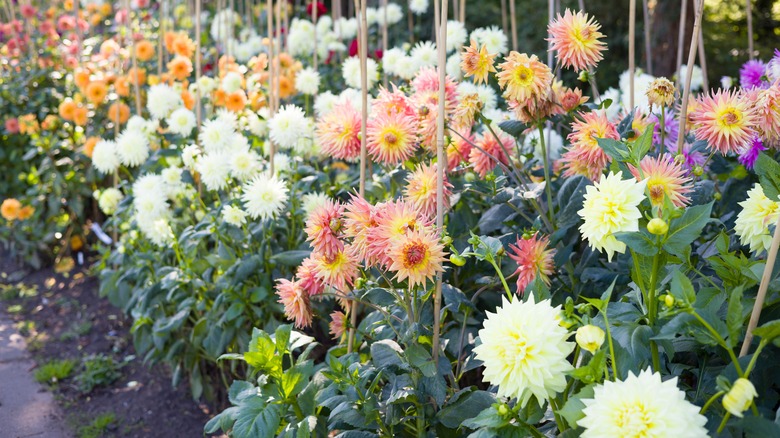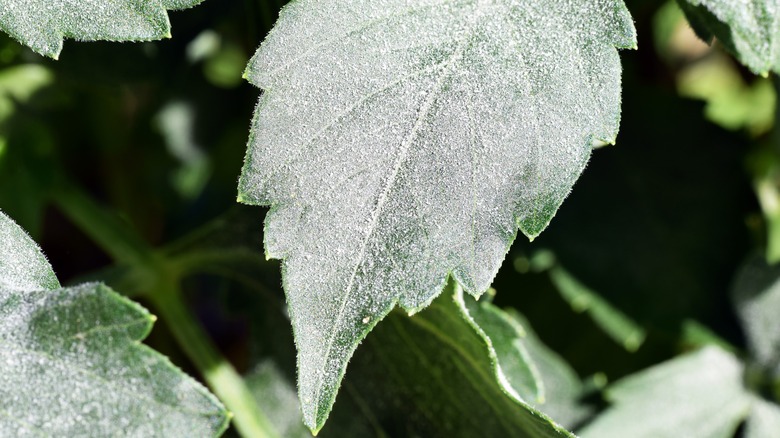Common Diseases You Should Know About Before Planting Dahlias In Your Garden
With thousands of dahlia cultivars available, there's no end to the ways that these popular perennial flowers can add beauty to your garden. While dahlias are not difficult to care for, they're as susceptible to diseases as any other plant. Some of the most common diseases that affect dahlias are powdery mildew, verticillium wilt, crown gall, aster yellows, and mosaic virus.
The good news? The best way to grow dahlias without diseases is to simply take good care of them, especially while they are young. Healthy and mature plants are more resistant to illness, and prevention is the best approach. Water directly at the soil rather than from overhead, use well-draining soil, and maintain plenty of air circulation between plants. Disinfect your tools between each plant with a solution of 10% bleach in water, and control pests that transmit diseases, like aphids and leafhoppers.
Some general symptoms of disease to look out for include wilting, changes in growth, and discoloration; the specific symptoms can vary based on the disease, but since there's a fair amount of overlap, you can't always tell exactly what pathogen has infected your dahlias. Regardless, knowing what to look out for means you can potentially extend the life of your dahlias and prevent the disease from spreading. For untreatable diseases, throw out the infected plants right away.
Fungal, bacterial, and viral dahlia diseases to know
Dahlia diseases can be divided into three categories: fungal, bacterial, and viral. One common fungal disease that affects many plants in addition to dahlias is powdery mildew. It appears as powdery white spots on the leaves and stems and can stunt growth or flower production but doesn't usually kill the plant. You can get rid of powdery mildew by pruning the affected parts and applying a fungicide. The same goes for gray mold, a fungus that appears as gray and brown spots. Verticillium wilt, on the other hand, is a fungal disease that is not curable; it causes wilted, yellowed leaves.
Most bacterial diseases aren't curable either, and many are difficult to diagnose at home. Two that stand out are crown gall, which causes overgrowths on the stems and roots, and bacterial stem rot, which causes mushy, stinky stems. Another is aster yellows; caused by a pathogen spread by leafhoppers, it causes flowers to develop with leaf-like green tissue. Plants infected with these diseases should be thrown out.
Viral diseases are tricky to diagnose as well, as there are more than a dozen that can infect dahlias, such as the mosaic virus. Symptoms of a viral infection include mottled discoloration on the leaves, stunted growth, yellowed veins, distorted foliage, and shortened stems and leaf nodes. Viral infections are unfortunately not curable, and infected plants should be destroyed.

